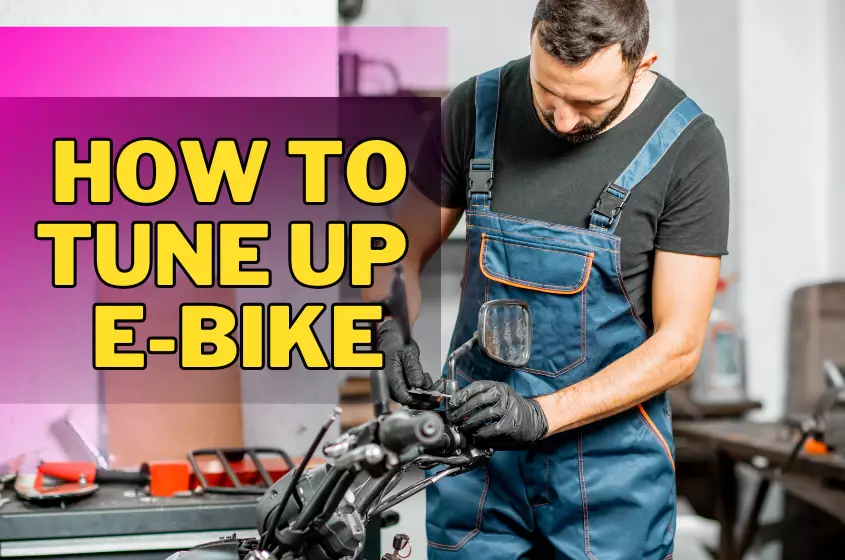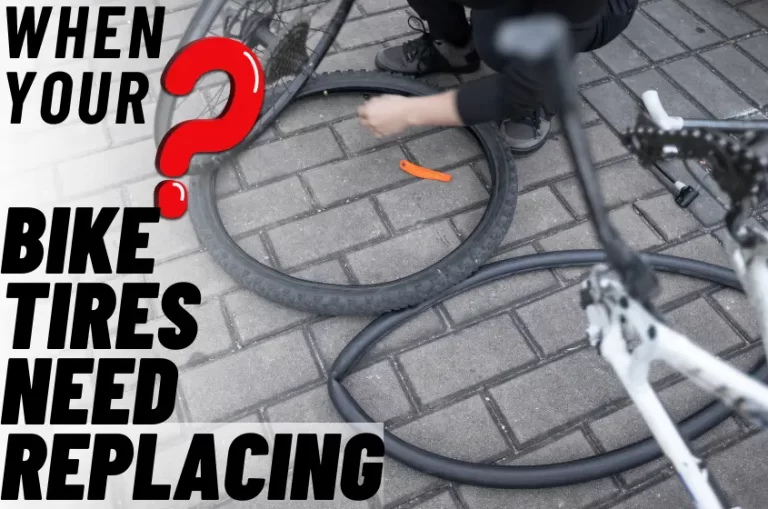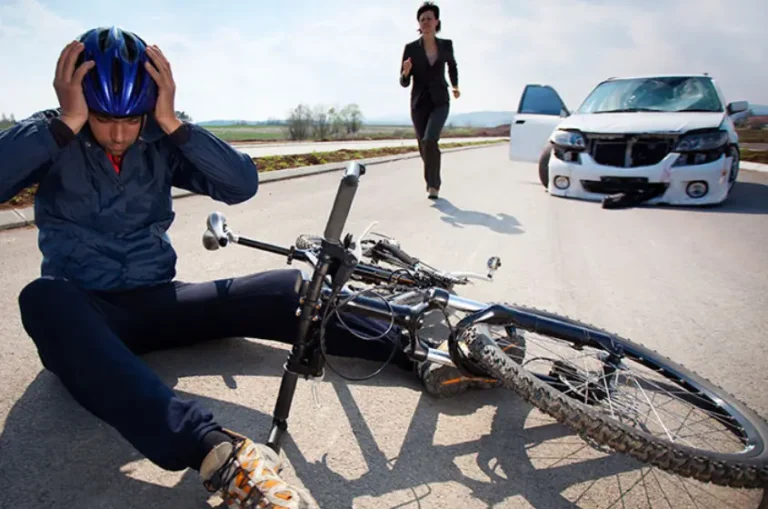What is E-Bike Tuning and Why is it Important? : A DIY Tune-Up
E-bike tuning refers to the process of optimizing and customizing an electric bicycle to enhance its performance and suitability for the rider’s specific needs. This can include adjustments to the motor, battery, brakes, and other components to achieve a more efficient and enjoyable riding experience. Tuning is essential for several reasons:
- Performance Optimization: By fine-tuning the motor and battery settings, riders can ensure their e-bike operates at peak efficiency, providing more power when needed and conserving battery life during less demanding segments of a ride.
- Personalization: Tuning allows riders to customize their e-bike to match their riding style and preferences, whether they prioritize speed, range, or handling.
- Adaptability: Adjustments can be made to accommodate different terrains and conditions, such as steep inclines or urban environments, making the e-bike more versatile.
Benefits of E-Bike Tuning
- Improved Performance: Tuning your e-bike can significantly enhance its performance. This includes increasing the motor’s efficiency, optimizing power output, and improving battery management. As a result, you can achieve higher speeds and better acceleration, making your rides more dynamic and enjoyable.
- Increased Range: Proper tuning can also help maximize the range of your e-bike. By optimizing the battery usage and power settings, you can extend the distance your e-bike can travel on a single charge. This is particularly beneficial for long commutes or extended recreational rides.
- Customized Riding Experience: E-bike tuning allows for a tailored riding experience. Whether you need more power for climbing hills, better handling for urban riding, or specific adjustments for off-road adventures, tuning can make your e-bike perform exactly how you want it to. Custom settings can include changing the level of pedal assistance, modifying throttle response, and adjusting suspension settings to match your riding style and terrain.
Safety Precautions for Tuning an E-Bike
Importance of Safety
Tuning an e-bike involves modifying or optimizing its components to enhance performance. While this can improve your riding experience, it is crucial to prioritize safety for several reasons:
- Avoiding Accidents: Improper tuning can lead to malfunctions, increasing the risk of accidents. For instance, adjusting the motor settings beyond safe limits can cause the bike to behave unpredictably, leading to loss of control.
- Preventing Injuries: Many tuning activities involve handling electrical components and tools. Without proper precautions, you risk electrical shocks, burns, or other injuries.
- Maintaining Warranty: Unauthorized modifications can void your e-bike’s warranty, leaving you unprotected if something goes wrong.
Basic Safety Measures
- Wearing Protective Gear: Always wear protective gear, including a helmet, gloves, and appropriate clothing. Helmets are particularly important as they significantly reduce the risk of head injuries in case of accidents.
- Understanding the E-Bike’s Manual: Familiarize yourself with the e-bike’s manual before attempting any tuning. The manual provides essential information about the bike’s components, recommended settings, and safety instructions.
- Working in a Safe Environment: Ensure you work in a well-lit, clean, and organized space. Keep tools and parts within easy reach and avoid distractions to minimize the risk of accidents.
- Using the Right Tools: Use the correct tools for the job to avoid damaging the bike or injuring yourself. This includes torque wrenches, screwdrivers, and specialized e-bike diagnostic tools.
- Battery Safety: Handle the battery with care. Avoid short-circuiting the terminals, and do not expose the battery to extreme temperatures. Always follow the manufacturer’s guidelines for charging and storage.
- Regular Maintenance Checks: Perform regular maintenance checks on your e-bike, especially after tuning. This includes checking the brakes, tires, and electrical systems to ensure everything is functioning correctly.
Tools and Equipment Needed for Tuning an E-Bike
Torque Wrench:
Purpose: Ensures bolts are tightened to the manufacturer’s specifications, preventing over-tightening or under-tightening which could damage components or compromise safety.
Usage: Adjustments on critical parts like the motor, battery mounts, and brake assemblies.
Screwdrivers:
Types: Both flat-head and Phillips.
Usage: General maintenance tasks such as adjusting the derailleur or other small components.
Allen Keys (Hex Keys):
Sizes: Ranging from 2mm to 12mm.
Usage: Commonly used for adjustments on almost every part of the e-bike including seat posts, handlebars, and brakes.
Tire Pressure Gauge:
Purpose: Ensures tires are inflated to the correct pressure for optimal performance and safety.
Usage: Regular checks before rides to maintain proper tire pressure.
Tire Levers:
Purpose: Helps remove tires from the rim when fixing flats.
Usage: Essential for changing or repairing inner tubes.
Portable Pump:
Purpose: To inflate tires on the go.
Types: Hand pumps or CO2 inflators.
Usage: Necessary for maintaining tire pressure during rides.
Chain Brush and Lube:
Purpose: Keeps the chain clean and lubricated, which is crucial for smooth operation and longevity.
Usage: Regular maintenance to ensure efficient drivetrain performance.
Specialized Equipment For Tunning E-bike
Diagnostic Tools:
- Purpose: Analyzes the e-bike’s electronic system, diagnosing issues with the motor, battery, and controller.
- Usage: Essential for troubleshooting and ensuring the e-bike’s electronic components are functioning correctly.
Crank Puller:
- Purpose: Removes the crank arms from the bottom bracket.
- Usage: Necessary for performing deep maintenance or repairs on the crankset.
Chainring Tools:
- Purpose: Helps in removing and installing chainrings.
- Usage: Used when replacing or upgrading chainrings, especially on mid-drive motors.
Battery Management Tools:
- Purpose: Manages battery diagnostics and programming.
- Usage: Ensures the battery is performing optimally and extends its life.
E-bike Stand:
- Purpose: Holds the bike securely off the ground, making it easier to work on.
- Usage: Facilitates various maintenance tasks, improving accessibility and stability.
Spider Tool:
- Purpose: Specialized tool for assembling and disassembling the lock nut on certain e-bike motors.
- Usage: Particularly for Bosch, Yamaha, and Panasonic motors, ensuring precise adjustments and maintenance.
Software Programming Devices:
- Purpose: Allows for updates and customization of the e-bike’s firmware.
- Usage: Essential for accessing and modifying the e-bike’s software to optimize performance.
Wondering about bike tune-up costs? We’ll address that too.
This article will walk you through everything you need to know to get peak performance from your electric ride. By the time you’re done, your battery will last longer, the motor will run quieter, and you’ll be zipping past road bikes like it’s nothing. So grab your tools and let’s get started. Your e-bike will thank you for it.

How to Tune your E-bike
E-Bike Motor tunning
Steps to Tune Your eBike Motor
Adjusting Motor Settings
- Accessing the Motor: Depending on your eBike model, you might need to remove the crankcase to access the motor. Some tuning kits, like dongles, are connected to the controller to bypass speed limits.
- Using Tuning Kits: Kits like the SpeedBox, Polini, or Blueped can modify the speed limit and adjust settings such as assistance levels and torque. These kits often use apps for configuration via Bluetooth.
- Programming Software: For certain motors like the Bafang BBS02 and BBSHD, you can use programming cables and software to adjust settings such as pedal assist levels, current limits, and low battery cutoffs.
Increasing Motor Power and Torque
- Firmware Updates: Some motors allow firmware updates to enhance performance. For instance, Bosch’s Performance Line CX motor can be tuned using the eBike Flow app to adjust torque and acceleration settings.
- Profile Settings: Adjust profiles to increase power output and torque. For example, using profiles that disable cadence limits can provide smoother assistance without power cuts.
Best Practices for Motor Tuning
Tips for Safe and Effective Motor Tuning
- Legal Considerations: Be aware that tuning to exceed speed limits is illegal in many regions and can void warranties. Ensure that any tuning complies with local laws to avoid fines or other legal issues.
- Battery Management: Tuning can increase power consumption, so monitor battery health and charge cycles. Higher loads can reduce battery lifespan and efficiency.
- Component Wear: Increased power can strain the drivetrain, causing faster wear of chains, gears, and other components. Regular maintenance is crucial.
Common Mistakes to Avoid
- Over-Tuning: Excessive tuning can lead to overheating and potential motor damage. Always start with moderate adjustments and monitor performance.
- Ignoring Safety: Failing to consider the legal and safety implications can lead to accidents or penalties. Always prioritize safe and responsible tuning practices.
- Improper Configuration: Incorrect settings, such as mismatched profiles or incorrect voltage settings, can harm the motor and reduce performance. Always follow manufacturer guidelines and seek professional assistance if needed.
How to Do eBike Battery Tuning
Check electrical connections
Verify all wiring is intact with no fraying or exposed conductors. Ensure the battery is securely mounted, and the charging port is clean. Flip through the levels of pedal assist and throttle to confirm they’re functioning properly. If anything seems off, it’s best to have it checked by your e-bike shop.
Now, let’s address the cost of a bike tune-up. The expense of tuning up a bicycle or an e-bike can vary, so it’s a good idea to check with local shops or search for ‘ebike tune up near me‘ to get a better idea of pricing in your area.
Giving your e-bike a quick DIY tune-up like this before the riding season will help ensure you get the performance and range you expect from your electric ride. Be safe out there and enjoy the open road.
Steps to Tune Your eBike Battery
Adjusting Battery Settings:
- Initial Charge: Fully charge the battery before first use to ensure all cells are activated. This helps in conditioning the battery for optimal performance.
- Programming Software: Use specific software or apps provided by manufacturers to fine-tune battery settings. This includes adjusting voltage cutoffs and current limits to protect battery health and enhance performance.
Maintenance and Best Practices:
- Temperature Management:
- Charging: Charge in a temperature-controlled environment (32°F – 104°F). Avoid charging in extreme cold or heat to prevent damage to battery cells.
- Storage: Store the battery at 75%-80% charge in a dry, indoor location. Regularly check and maintain this charge level to extend battery life.
- Avoid Overcharging: Overcharging weakens battery cells. Unplug the battery once fully charged and avoid charging overnight.
- Regular Use and Charging:
- Regular Use: Use the battery frequently to keep it in good condition. Infrequent use can lead to cell degradation.
- Charging Cycles: Charge the battery when it reaches around 50% to avoid deep discharges which can shorten the battery lifespan.
Key Steps in eBike Battery Tuning
| Step | Description |
|---|---|
| Initial Charge | Fully charge the battery before first use to condition all cells. |
| Temperature Control | Charge and store the battery in a temperature-controlled environment (32°F – 104°F). |
| Avoid Overcharging | Unplug the battery once fully charged; avoid overnight charging to prevent cell weakening. |
| Regular Use | Use the battery frequently and charge it at around 50% to maintain health and performance. |
| Safety Inspections | Regularly check for physical damage or corrosion on the battery and connectors. |
How to Do eBike Controller Tuning
Tuning your eBike controller can significantly enhance your riding experience by optimizing power delivery, improving efficiency, and ensuring smooth operation. Here’s a detailed guide on how to perform eBike controller tuning:
Firmware Updates: Custom Settings and Power Modes
- Update Firmware: Begin by checking if your eBike’s controller has any available firmware updates. These updates can provide new features and performance improvements. Use the manufacturer’s recommended software and ensure compatibility with your specific controller model.
- Custom Settings: Adjust the settings such as throttle response, pedal assist levels, and power limits. For example, configuring the Pedal Assist System (PAS) settings can help tailor the power output to match your riding style and terrain.
Power Delivery: Smooth Acceleration and Regenerative Braking Settings
- Throttle Curves: Create customized throttle curves to optimize the balance between speed and efficiency. This helps in preventing sudden surges in power and ensures a smoother ride.
- Regenerative Braking: Adjust the regenerative braking settings to recover more energy while braking. This not only extends the range but also reduces the wear on mechanical brakes. Properly tuning these settings can make a significant difference in overall efficiency and ride comfort.
Temperature Regulation: Heat Dissipation and Cooling Mechanisms
- Monitor Temperatures: The controller should actively manage the temperature of the motor and transistors to prevent overheating. Ensure that the firmware settings include thermal management protocols to adjust power output based on temperature readings.
- Heat Sinks and Cooling Fans: If your controller supports it, installing additional cooling mechanisms such as heat sinks or fans can help dissipate heat more effectively, ensuring consistent performance during extended rides or in hot climates.
Key Steps in eBike Controller Tuning
| Step | Description |
|---|---|
| Firmware Updates | Check and install any available firmware updates to unlock new features and improvements. |
| Throttle Curves | Customize throttle response to balance speed and efficiency for smoother acceleration. |
| Regenerative Braking | Adjust settings to optimize energy recovery and extend battery life. |
| Temperature Monitoring | Ensure firmware includes thermal management to prevent overheating. |
| Cooling Enhancements | Install heat sinks or cooling fans if supported by the controller to improve heat dissipation. |
How to Tune Up eBike Pedal Assist System (PAS)
Tuning the Pedal Assist System (PAS) on your eBike can significantly improve your riding experience by optimizing the sensitivity, responsiveness, and accuracy of the assistance provided. Here’s a detailed guide on how to effectively tune your eBike PAS:
Sensitivity and Levels: Adjusting the Level of Assistance
- Adjust Assistance Levels:
- Multiple Levels: Most eBikes offer multiple levels of assistance, typically ranging from 0 to 5 or even up to 9. Each level provides a different degree of motor assistance. For example, lower levels (1-2) offer slight assistance suitable for flat terrains, while higher levels (4-5) provide substantial help for climbing hills.
- LCD Display Settings: Access your eBike’s LCD display settings to adjust the PAS levels. Set lower levels to offer minimal assistance to preserve battery life and higher levels for more demanding rides.
- Sensitivity Adjustment:
- Sensitivity Range: Adjust the PAS sensitivity settings on your eBike’s display. Sensitivity typically ranges from 1 (most sensitive) to 24 (least sensitive). Higher sensitivity means the motor responds quicker to pedaling, which can be useful for smooth, instant power delivery.
Cadence and Torque Sensors: Calibration for Accurate Performance
- Cadence Sensors:
- Functionality: Cadence sensors activate the motor based on pedaling speed. When you start pedaling, the sensor signals the motor to provide assistance. Adjusting the cadence sensor involves setting the PAS levels to match your preferred pedaling rate and ensuring the sensor is properly aligned with the magnet ring.
- Prevent Overpedaling: To avoid overpedaling (spinning too fast with little resistance), match higher PAS levels with appropriate gear settings. This ensures a balanced and efficient use of motor power.
- Torque Sensors:
- Functionality: Torque sensors measure the force applied to the pedals and provide assistance proportional to that force. This type of sensor offers a more natural and responsive riding experience as it adjusts motor output based on your pedaling effort.
- Calibration: Calibrate torque sensors to ensure they accurately detect and respond to your pedaling force. This may involve adjusting the settings in your eBike’s control panel or firmware to fine-tune the sensor’s responsiveness.
Key Steps in Tuning PAS
| Step | Description |
|---|---|
| Adjust Assistance Levels | Use the LCD display to set different PAS levels for varying degrees of motor assistance. |
| Set Sensitivity | Adjust PAS sensitivity to control how quickly the motor responds to pedaling. |
| Align Cadence Sensor | Ensure the cadence sensor is properly aligned with the magnet ring for accurate performance. |
| Prevent Overpedaling | Match higher PAS levels with appropriate gear settings to maintain efficient power use. |
| Calibrate Torque Sensor | Fine-tune torque sensor settings to ensure responsive and proportional motor assistance. |
Tuning for eBike Throttle
Response and Sensitivity
- Adjusting Response Curve: Fine-tune the throttle’s response to ensure smooth acceleration. Use software to modify the throttle curve, reducing dead zones and preventing sudden surges in power.
- Compatibility: Ensure the throttle integrates seamlessly with the controller. Verify the throttle’s voltage and signal compatibility with the controller to avoid lag or erratic performance.
How to Do Brake Tuning
Test the brakes
Squeeze each brake lever firmly to make sure they’re tight and responsive. The levers shouldn’t pull all the way to the handlebar. If the brakes feel loose or make noise, they likely need adjustment. Properly working brakes are critical for safe riding.
Adjustment
- Brake Pad Alignment: Ensure pads are properly aligned with the rotor for maximum contact and efficiency.
- Fluid Levels (Hydraulic): Regularly check and top up brake fluid, bleeding the system as needed to remove air bubbles.
- Cable Tension (Mechanical): Adjust the tension to eliminate slack, ensuring immediate brake response.
Make sure your brake pads or brake shoes still have plenty of material left and aren’t worn down. If the pads are less than 1/4 inch thick, it’s time for replacement. Also, check that your brake levers or brake handles are tight and secure. Loose or malfunctioning brakes can be dangerous, so replace brake pads or have brake issues repaired by a bike shop as soon as possible.
Best Way to Tune Up Derailleur and Gears of eBike
Adjusting Gear Ratios for Optimal Performance
- Adjust Limit Screws: Start by adjusting the high and low limit screws on the derailleur. These screws prevent the chain from falling off the cassette. Adjust the high limit screw to align the derailleur with the smallest cog and the low limit screw with the largest cog.
- Set Cable Tension: Proper cable tension is crucial for smooth shifting. Release the tension on the derailleur cable, pull it taut, and secure it. Use the barrel adjuster to fine-tune the tension, ensuring precise movement across gears.
Fine-Tuning Derailleur Alignment and Indexing Gears
- Indexing Gears: Shift through all gears and use the barrel adjuster to fine-tune the cable tension, ensuring each shift is smooth and precise. Adjust the derailleur hanger if needed to maintain alignment.
- Test Ride: Perform a test ride to check for any shifting issues under real conditions. Make additional adjustments to the cable tension or limit screws as necessary based on the ride feedback.
Wheels and Tires Tune-Up
Tire Pressure for Different Terrains/Conditions
- Check Manufacturer Recommendations: Use the recommended tire pressure as a baseline. Generally, higher pressures are suitable for road riding, while lower pressures offer better traction on off-road trails.
- Adjust for Conditions: Lower the tire pressure slightly for wet or muddy conditions to improve grip. For sandy or loose surfaces, slightly reduce the pressure to increase the contact area.
Examine tires for any punctures, tears, or excess wear, especially on the sidewalls. Under-inflated or over-inflated tires can also negatively impact performance and handling. Use a bike tire pressure gauge to check that your tires are inflated to the recommended PSI, usually printed on the sidewall of the tire.
Wheel Alignment: Ensuring True and Balanced Wheels
Give your wheels a spin to ensure they are securely fastened and spin freely without wobbling or making noise. If wheels are loose or damaged, tighten the axle nuts or have the wheels trued by a bike shop to avoid instability or damage when riding.
- Check Trueness: Spin the wheel and observe for any wobbles. Use a truing stand or place the bike upside down and use a reference point like the brake pads to detect deviations.
- Adjust Spokes: Tighten or loosen the spokes using a spoke wrench to bring the wheel back into true. Ensure even tension across all spokes to maintain wheel integrity.
- Inspect Hub and Bearings: Check the hub for smooth rotation and adjust or replace bearings if there is any resistance or play.
How to Tune eBike Suspension
Fork and Rear Shock Settings
Preload Adjustment:
- Forks: Set the sag, which should be 20-25% of the fork’s total travel. Use a shock pump to add or remove air pressure to achieve this. Sit on the bike, measure the compression, and adjust as necessary.
- Rear Shock: Adjust the preload by adding air or changing the coil spring to match your weight and riding conditions. This helps maintain the suspension’s responsiveness over varied terrain.
Rebound and Compression:
- Rebound: Adjust the rebound to control how quickly the suspension returns to its original position after compression. Set the rebound dial to the middle, test on rough terrain, and fine-tune until the ride feels balanced—neither too bouncy nor too harsh.
- Compression: Modify compression damping to control how easily the suspension compresses. Increase damping for a firmer ride on smooth terrain and decrease it for better shock absorption on rough trails.
Maintenance
Regularly inspect and lubricate the seals and bushings. Check air pressure and ensure there are no leaks. Service the suspension components according to the manufacturer’s recommendations to maintain optimal performance.
How To Tune up a Frame
Inspect the frame and components
Carefully go over the entire frame for any cracks or damage. Make sure the handlebars, stem, and seat post are securely tightened and aligned properly. Spin each wheel to ensure the rims are true, and the tires are fully inflated. Lubricate the chain and wipe down the cassette and chainrings to remove built-up grime.
Weight Distribution
Ensure your eBike’s weight is evenly distributed for better balance and stability. Adjust the position of components such as the battery and motor to achieve this. Test ride the bike and make adjustments to prevent the bike from feeling front or rear-heavy.
Structural Integrity
Regularly check the frame for cracks, stress points, or any signs of damage. Pay particular attention to joints and areas near the motor and battery mounts. Use a flashlight to inspect hard-to-see areas and ensure the frame remains in top condition.
Lighting System Tunning
Brightness and Angle
Adjust the angle of your bike lights to ensure optimal visibility without blinding oncoming traffic. Set the brightness according to riding conditions—higher for off-road or night rides and lower for well-lit urban areas.
Energy Consumption
Balance brightness with battery consumption by using energy-efficient LEDs and adjusting settings based on the ride duration and conditions. Regularly check the battery levels and plan for longer rides to ensure your lights remain functional (Rad Power Bikes).
How to do Connectivity Tune Up For best Performance
Bluetooth and App Integration
Sync your eBike with apps via Bluetooth for data tracking and custom settings. These apps can monitor performance metrics, assist with navigation, and provide diagnostic information. Ensure all firmware is up-to-date for the best integration (SRAM).
GPS and Security Systems
ntegrate GPS for navigation and security. Use GPS tracking to monitor your bike’s location and set up anti-theft alerts. Some systems allow remote locking and tracking, enhancing the security of your eBike.
Other Tunning of electric Bike: Adjust and Lubricate the Drivetrain
To keep your e-bike running smoothly, it’s a good idea to perform regular tune-ups. Adjusting and lubricating the drivetrain is key.
The Chain
The chain is the hardest working part of your e-bike, so keeping it clean and lubricated is critical. Wipe down the chain with a rag to remove built-up dirt and grime. Then apply bike chain lubricant, letting it soak in. Spin the pedals to work the lube into all the links. Wipe off any excess with a clean rag. Do this every 100-200 miles of riding.
Derailleur Pulleys
The derailleur pulleys guide the chain as it moves between cogs. Check that the pulleys spin freely and quietly. If they’re sticky or noisy, clean them and apply a drop of light oil.
Cables
E-bike cables connect the shifters to the derailleurs. Over time, cables can fray, rust, and bind. Check that your cables move smoothly through the housing. If shifting becomes difficult or imprecise, it may be time for new cables. Your local bike shop can replace them.
By keeping your drivetrain clean, lubricated, and tuned, your e-bike will shift smoother, ride quieter, and ultimately last longer. Performing regular DIY tune-ups along with professional servicing is key to maximizing the performance and longevity of your electric bicycle.
Conclusion
So there you have it, a few simple steps you can take to keep your e-bike riding smooth and problem-free. By checking and tightening major components, lubricating moving parts, and making sure your battery is well maintained, you’ll get peak performance from your ride for years to come. While e-bikes do require a bit more care and feeding than a standard bike, taking the time to show your e-bike some love will pay off with more miles and bigger smiles. So get out there, feel the wind in your hair, and enjoy the ride—you’ve earned it. With regular tune-ups, your e-bike will take you the extra mile.”






